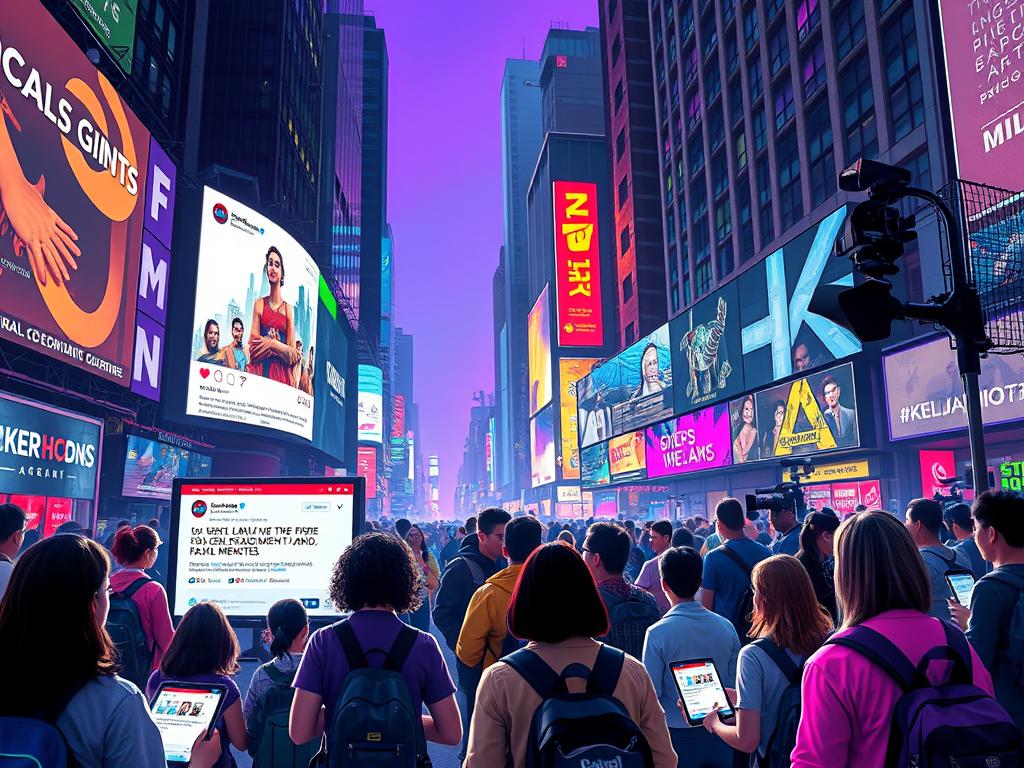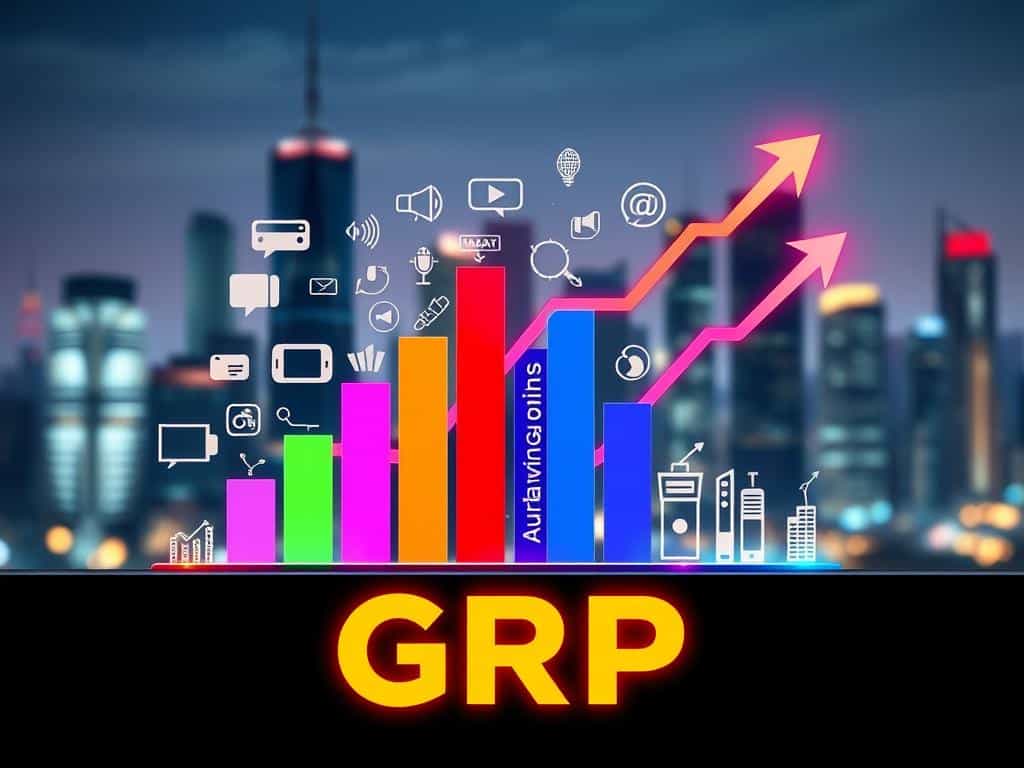In the realm of marketing strategies, distinguishing between advertising and publicity is crucial for effective brand enhancement. Although both aim to improve audience reach and enhance a company’s visibility, they employ different promotional tactics. Advertising revolves around paid promotions, channeling significant investments into various media platforms to drive sales. On the other hand, publicity leverages cost-free media coverage to generate public interest and awareness about the brand without directly incurring expenses.
Understanding the nuances between these marketing communications methods allows you to strategically utilize each to maximize brand presence in the marketplace. While advertising offers control over promotional content, ensuring a positive message about your products, publicity relies on external media, providing an authentic and often more credible perspective to the audience.
Understanding Advertising: Paid Promotions to Drive Sales
Advertising serves as a cornerstone of marketing by enabling businesses to promote their products and services to a targeted audience. This paid media strategy is designed explicitly to attract consumers, highlight product benefits, and achieve sales targets. The effectiveness of advertising can significantly impact a company’s overall success, from brand awareness to conversion rates and revenue generation.
Definition and Goals
Advertising is a paid form of communication aimed at influencing consumer behavior and driving sales. Its primary goal is to inform, persuade, and remind potential customers about a product or service. By leveraging distinct platforms such as digital advertising, traditional media, and content marketing, businesses can achieve their marketing goals. Promotional campaigns are meticulously crafted to boost sales, amplify product features, and emphasize unique selling points. Companies invest in paid media to reach specific demographics through various channels like social media marketing, email marketing, and product placements in TV shows and films.
The Role of Budget in Advertising Success
Budget allocation plays a pivotal role in the success of advertising campaigns. A well-thought-out budget ensures that marketing investments yield high returns by maximizing reach and engagement. Effective budget management allows companies to decide on the content, design, and placement of advertisements, optimizing their presence across both digital and traditional platforms. For instance, social media marketing and Google Ads offer measurable flexibility, while local publications can effectively target local communities. The strategic use of budget in advertising creates a balance between targeting efficiency and the overall impact on sales.
Here’s a detailed comparison table showcasing the impact of advertising and promotions:
| Aspect | Advertising | Promotions |
|---|---|---|
| Timeframe | Long-term | Short-term |
| Cost | Typically more expensive | Generally not very expensive |
| Nature | Emotional appeal for brand building | Unemotional with immediate incentives |
| Outcome | Slower results aimed at brand awareness | Immediate results linked to sales |
| Applicability | Suitable for medium to large companies | Can be implemented by small to large companies |
The Nature of Publicity: Cost-Free Media Coverage
Publicity, unlike advertising, operates on a cost-free basis. Relying on earned media coverage, it aims to spread information about a brand through newsworthy stories. This strategic communication approach leverages media relations to create a favorable impression and increase brand awareness.

Definition and Purpose
Publicity involves disseminating compelling stories about your brand without the need to pay for space or time. This method focuses on creating editorial endorsement, which helps to cultivate a positive reputation. Historically, publicity first appeared in Paris in the early 19th century, where advertisements and campaigns for consumer items started to face regulation. By the 19th century, U.S. companies were incorporating pro-sales messages, demonstrations, and sometimes exaggerations into their publicity efforts.
Albert Lasker revolutionized advertising in the early 20th century, highlighting how appealing to consumers’ psychology could enhance credibility. Unlike advertising, publicity places the control of the message presentation in the hands of the media, thereby offering editorial independence perceived as more credible by the audience.
How Publicity Generates Brand Awareness
Successful publicity campaigns can significantly increase brand awareness through strategic communication and effective media relations. By gaining editorial endorsement from trusted media sources, your brand can achieve greater recognition and credibility. Publicity leverages tools like press releases, news programs, and podcasts to disseminate its message, perceived as more trustworthy than traditional advertising methods.
Despite its many advantages, publicity must navigate challenges such as the potential for negative coverage which can impact a brand’s reputation and revenue. On the other hand, corporate social responsibility (CSR) initiatives can help mitigate negative publicity and restore positive brand perception.
Integrating both advertising and publicity strategies can enhance your overall brand messaging. Learn more at this detailed guide.
Comparative Aspects
| Aspect | Advertising | Publicity |
|---|---|---|
| Cost | Paid | Cost-free |
| Message Control | Company-controlled | Media-influenced |
| Credibility | Lower | Higher |
| Reach | Targeted | Potentially broader |
| Objective | Short-term sales | Long-term reputation |
Major Differences: Control Over Content
One of the major differences between advertising and publicity is the control over content. Advertising allows the company to exercise full content control. This includes message crafting, arrangement, and overall creative direction, guaranteeing a consistent portrayal of the brand message.
Advertising: Company-Controlled Messaging
In advertising, companies meticulously shape their *editorial content* to present a specific and controlled *media portrayal* of their brand. Since advertising is a paid promotion, businesses ensure that their key benefits, values, and unique selling propositions are accurately honed to reach target audiences effectively. According to Conductor, “When deciding between four brands, 83.6% of consumers who read a piece of educational content by a brand chose that brand when prompted to purchase.” This statistic underscores the importance of precise content control in advertising.
Publicity: Media-Influenced Coverage
On the other hand, *publicity* relies significantly on *media influence*, where the *editorial content* is often subject to how journalists and other third-party entities choose to present the information. While this can add a layer of authenticity and credibility, it also means that *content control* is less stringent. The portrayal of the *brand message* can vary, depending on the publication’s angle and interpretation, making it less predictable.
| Aspect | Advertising | Publicity |
|---|---|---|
| Content Control | High, company-managed | Low, media-managed |
| Credibility | Lower, perceived as paid content | Higher, perceived as earned media |
| Customization | Highly customizable | Less customizable |
| Cost | Paid | Usually free |
Emphasizing the role of *content control* and *message crafting* in driving consumer decisions, content marketing proves highly effective. It produces three times more leads per dollar compared to other strategies, showcasing its cost-effectiveness. When you leverage *advertising* for a tightly managed *brand message*, you capitalize on this advantage.
Public relations, conversely, integrates targeted media strategies such as press releases and pitches to media outlets, aiming to garner coverage in publications. Marketing promotional content spans various channels including email, social media, blogs, and more, tailored for direct citizen engagement. This multi-channel approach demonstrates the versatility in how *editorial content* can be adapted to fit different promotional needs and purposes.
The Impact of Advertising on Consumer Perception
Advertising holds a significant impact on shaping consumer influence and brand perception. By leveraging various media channels, including television, radio, print, digital platforms, and outdoor spaces, advertising endeavors to instill a specific image of the brand in the consumer’s mind. This targeted advertising is crafted to influence consumer behavior, preferences, and purchasing decisions.

A well-executed advertising campaign can create brand awareness, shape perceptions, and drive purchase intent. Different advertising strategies and techniques such as informative, persuasive, comparative, and emotional advertising are employed to elicit desired responses. These approaches not only build trust and credibility but also form positive associations with products or services, reflecting a strong marketing impact.
In the digital age, advertising has become even more personalized, allowing for higher degrees of targeted advertising. Research shows that 70% of consumers are more inclined to purchase from a brand they follow on social media. This data highlights the importance of aligning advertising strategies with consumer behavior to maximize effectiveness.
The influence of advertising extends to various aspects of consumer decision-making. Studies indicate a significant positive correlation between advertising exposure, consumer attitudes, and purchase intentions. For instance, research from the Pediatrics Journal points out that advertising significantly impacts children’s snack preferences, often leading them to choose unhealthy options after being exposed to food ads.
A comprehensive study adopting mixed methods research aims to understand the persuasive power of advertising. With survey-based quantitative data collection on consumer perceptions, attitudes, and purchase behavior alongside qualitative in-depth interviews exploring emotions and motivations, this research provides valuable insights. These findings underline the necessity for continuous evaluation of advertising’s effectiveness in achieving marketing goals and its profound impact on consumer perception.
The Credibility of Publicity Versus Advertising
Credibility assessment plays a crucial role in shaping consumer trust. When comparing the credibility of publicity versus advertising, publicity often holds a significant advantage. This is largely due to the fact that publicity is ‘earned’ rather than ‘bought.’ Consequently, stories generated through publicity efforts and verified by trusted sources enjoy a higher level of trust among consumers.
Editorial authenticity is another critical factor that favors publicity. An article derived from a press release or a public relations campaign is seen as authentic editorial content. Consumers generally view this type of media as being more reliable because it is not directly funded by the brand involved. This contrasts with advertising, which consumers often scrutinize, recognizing it as paid content aimed at promoting a specific agenda.
In terms of media influence, expert content in publicity lifts familiarity with a brand by 88% more than branded content. Furthermore, public relations efforts are almost 90% more effective in influencing consumer decision-making compared to traditional advertising. Editorial commentary also carries more weight than pure advertisements, second only to word-of-mouth recommendations.
Consumer trust is essential for brand success. Research shows that earned media stories are deemed the most credible by participants in multiple studies. On the other hand, nearly half of the participants considered native advertisements the least credible. Although advertising is necessary for building brand awareness, its inherent bias as paid content limits its effectiveness in gaining genuine consumer trust.
To further illustrate these points, here’s a comparison between the impact of publicity and advertising:
| Aspect | Publicity | Advertising |
|---|---|---|
| Credibility | High (earned media) | Moderate (paid content) |
| Cost | Low (cost-effective) | High ($125,000 for a full-page ad) |
| Consumer Influence | 90% more effective | Less effective |
| Longevity | Lasting impact (social media shares) | Short-lived (requires repetition) |
| Perceived Bias | Low (editorially authentic) | High (recognized as promotional) |
In conclusion, when weighing the aspects of credibility assessment, editorial authenticity, consumer trust, and media influence, publicity appears to hold a considerable edge over advertising. Companies aiming to build and maintain consumer trust should consider leveraging publicity to enhance their brand’s credibility.
A Difference Between Advertising And Publicity: Strategic Uses in Marketing
Understanding the strategic uses of advertising and publicity is essential for any effective marketing strategy. These promotional tactics serve different purposes, and knowing when to use each one can make or break your brand strategy. The decision between advertising and publicity depends on your marketing goals, budget, and target audience.
When to Use Advertising
Advertising is a cornerstone for businesses aiming for direct consumer engagement and measurable results. With advertising, you have complete control over the content, design, and timing of your promotions. It is particularly useful when you need a direct call to action, such as during product launches or sales events. Given that 100% of businesses consider advertising a crucial component of their marketing strategy, it is clear that this method effectively drives sales and captures your target audience’s attention.
In today’s digital age, the use of advanced analytics tools allows you to track the performance of your advertising campaigns and measure return on investment. This is invaluable for businesses employing digital advertising techniques like PPC and social media ads. Although advertising can be costly, it offers precise targeting and a comprehensive media strategy to ensure that your promotional efforts resonate with the intended audience.
When to Leverage Publicity
Publicity, on the other hand, is a more cost-effective way to build or maintain your brand’s image. It involves free media coverage, which can be incredibly valuable when aiming to enhance credibility and trust among your audience. While companies do hire PR agencies, the overall cost is generally lower compared to paid advertisements. Publicity has a longer lifespan and impact, with PR mentions or backlinks benefiting the business for months or even years.
However, it’s crucial to recognize that publicity is out of your direct control, relying heavily on media outlets to cover your story. This can be both a strength and a limitation. Strategically leveraging publicity is advisable when you seek third-party validation and aim to build a strong brand presence without a hefty budget. Understanding these nuanced differences will help you formulate a comprehensive marketing strategy that makes the most out of both advertising and publicity, aligning well with your overall brand strategy.







